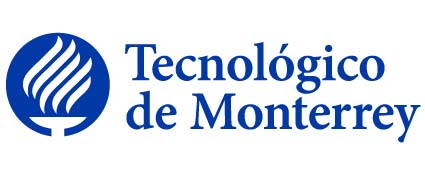
|
|||||
Disciplina asociada:Graduados de Medicina y Ciencias de la Salud |
|||||
Escuela:
Por definir
|
|||||
Departamento Académico:
Por definir
|
|||||
Programas académicos: |
|||||
Requisitos:No tiene. |
|||||
Equivalencia:No tiene. |
|||||
Intención del curso en el contexto general del plan de estudios: |
|||||
|
Es un curso para médicos especialistas en Oftalmología que buscan una alta especialización en Oftalmología Pediátrica y Estrabismo. Se incluyen actividades clínicas enfocadas a la aplicación de los conceptos básicos y de profundidad sobre la anatomía de la órbita y los músculos extraoculares así como su fisiología normal y patofisiología del estrabismo en niños y adultos en un contexto hospitalario y en la consulta externa. Se expone al alumno a las principales tipos de estrabismo congénito y adquirido. Se requieren conocimientos básicos previos sobre Oftalmología General. Como resultado del aprendizaje se espera que el alumno sea capaz de reconocer los principales tipos de estrabismo, sus diagnósticos diferenciales y de dar tratamiento médico y quirúrgico de sus pacientes que logre la alineación y función ocular de sus pacientes. El alumno documentará en un portafolio los pacientes vistos en las diferentes sedes del programa así como los tratamientos médicos o cirugías en los que se involucra como parte del equipo de atención médica bajo la supervisión del profesor responsable. |
|||||
Objetivo general de la Unidad de Formación: |
|||||
| Al finalizar el curso el alumno será capaz de identificar las características clínicas, diagnosticar y establecer la mejor opción de tratamiento médica y/o quirúrgica para el paciente con estrabismo. | |||||
Técnica didáctica sugerida: |
|||||
| No especificado | |||||
Bibliografía sugerida: |
|||||
|
LIBROS DE TEXTO: * Von Noorden, Gunter K., Binocular vision and ocular motility : theory and management of strabismus , 6th ed., St. Louis, Mo. : Mosby,, c2002, , 0323011292 LIBROS DE CONSULTA: * Helveston E., Surgical Management of Strabismus, Mosby, 1993, * Coats D, et al., Strabismus surgery and its complications, Springer, 2007, 978-3-540-32703-5 * Del Monte, Monte A., Atlas of pediatric ophthalmology and strabismus surgery , , New York ; Edinburgh : Churchill Livingstone, 1993, , 0443087083 * Von Noorden G., Helveston E., Strabismus: A decision making approach, Mosby, 1994, * Taylor David, et al., Pediatric Ophthalmology and Strabismus, 4, Elsevier- Saunders, 2005, 0-7020-2708-1 |
|||||
Perfil del Profesor: |
|||||
|
(600241)Médico Cirujano con Especialidad en Oftalmología CIP: 600241 Experiencia recomendada: Subespecialidad en Oftalmología Pediátrica y Estrabismo. Certificado por el Consejo Mexicano de Oftalmología, Miembro de la Academia Americana de Oftalmología, Miembro de la Academia Americana de Oftalmología Pediátrica y Estrabismo. |
|||||
|
|||||
Discipline:Graduate Medicine and Health Sciences |
|||||
School:
Undefined
|
|||||
Academic Department:
Undefined
|
|||||
Programs: |
|||||
Prerequisites:None. |
|||||
Equivalences:None. |
|||||
Course intention within the general study plan context: |
|||||
|
This is a sub-specialty level course intended for graduated ophthalmologists that require a higher specialization in Pediatric Ophthalmology and Strabismus. The course includes clinical activities to apply basic and deep concepts about orbit and extraocular muscles anatomy as well as its normal physiology and patophysiology of strabismus in children and adults. The student is exposed to the main congenital and acquired forms of strabismus. Previous General Ophthalmology concepts are required. Learning outcomes: to recognize the main forms of strabismus despite the age of the patient; to give a differential diagnosis and to plan and give the medical and/or surgical treatment to achieve ocular alignment and function of the patients. To document in a portfolio the patients seen in the different health care units of the program as well as the medical treatments and surgeries where they get involved as part of the medical team, always under professor supervision. |
|||||
Course objective: |
|||||
| Students will be able to identify the main ophthalmic clinical characteristics of the patient with strabismus, diagnose it and give the best medical and/or surgical treatment for the condition. | |||||
Teaching and learning tecniques: |
|||||
| Not Specified | |||||
Suggested Bibliography: |
|||||
|
TEXT BOOKS: * Von Noorden, Gunter K., Binocular vision and ocular motility : theory and management of strabismus , 6th ed., St. Louis, Mo. : Mosby,, c2002, , 0323011292 BOOKS FOR CONSULTATION: * Helveston E., Surgical Management of Strabismus, Mosby, 1993, * Coats D, et al., Strabismus surgery and its complications, Springer, 2007, 978-3-540-32703-5 * Del Monte, Monte A., Atlas of pediatric ophthalmology and strabismus surgery , , New York ; Edinburgh : Churchill Livingstone, 1993, , 0443087083 * Von Noorden G., Helveston E., Strabismus: A decision making approach, Mosby, 1994, * Taylor David, et al., Pediatric Ophthalmology and Strabismus, 4, Elsevier- Saunders, 2005, 0-7020-2708-1 |
|||||
Academic credentials required to teach the course: |
|||||
|
(600241)Physician & Surgeon with Specialty in Ophthalmology CIP: 600241 Recommended Experience: Subspecialty in Pediatric Ophthalmology and Strabismus training. Certified by the Ophthalmology Mexican Board, member of the American Academy of Ophthalmology, Member of the American Academy of Pediatric Ophthalmology and Strabismus. |
|||||